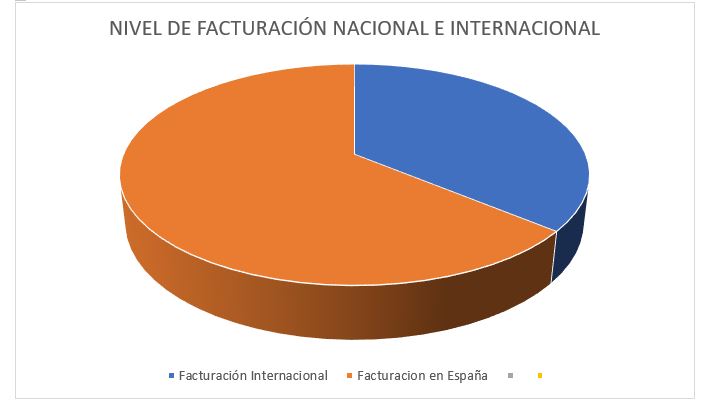Digital consultant
since 2005
In this post we are going to analyse the progress of internationalisation in fashion companies in Spain. Over the last few years, export strategies have been considerably affected.
One of the impacts of the new Coronavirus pandemic, which started at the end of 2019, was the limitation of large-scale commercial operations.
In addition, demand in some areas was more limited due to the difficult public health situation facing Spain and the rest of Europe. All of this caused a quantifiable negative impact in the export rates of companies in this sector.
Throughout this post we will be analysing the current state and forecasts regarding internationalisation. Do companies in this sector in Spain expect an increase in exports? We invite you to find out all the details below.
Progress of internationalisation in fashion companies in recent years
During the period of the new normal that began in 2021, several companies in the fashion sector decided to embark on new strategies to get their international operations back on track.
However, some restrictions remained in place due to the pandemic, so these efforts were not as successful as expected.
As a result, several companies took a focus on other strategic marketsThe EU's investment in the region was limited, thus limiting investment in operations in countries that at the time had less potential.
It is estimated that by 2020 the export weight was positioned at 38%, while by 2021 when various Covid19 containment measures had been put in place, the export influence was 36%.
According to estimates obtained from the Barometer of Fashion Companies in Spain 2022, this decline and the percentage of the level of exports reached by 2021 is the lowest rate.
The major influence of e-commerce increased demand for international sales in companies in this sector.
In fact, analysts saw Ecommerce as a lifeline that allowed the pace or progress of internationalisation to improve at least for some time.
But this did not prevent a setback with the arrival of the new normality, and some important exporting countries faced severe restrictions. All these elements played against each other and led to the results obtained.
All the impact on mobility at the commercial level and the difficulties in undertaking the logistical strategies required for international shipments have hindered the growth of internationalisation.
Faced with the difficulty of keeping up with a faster pace of international sales, companies in the fashion industry focused more attention on local operations.
Local and international turnover flow
In summary, the level of international turnover stood at 36%, while the level of international turnover stood at 36%. 64% of the sales reflected in the turnover were handled locallyin the Spanish market.
The following graph gives a better appreciation of this information:
Forecasts of the progress of internationalisation in fashion companies
While it is true that there was no growth in the last year in the level of internationalisation of fashion companies, most of these companies maintain an optimistic view on this issue.
At least 68% of the companies have a positive expectation that international sales may increase over the last year. In addition, there are some strategies that have had great relevance and that could bring us closer to this purpose.
In fact, a number of companies have been announcing expansion plans, and these measures are intended to encourage the advancement of global sales in fashion companies.
On the other hand, by 2022, the implementation of the plans to promote international sales has made it possible to regain some of the trade control lost in certain countries.
And not only has there been a growing interest in increasing the commercial impact in certain areas where there were already commercial operations, but also in entering new territories.
The following assessment provides an insight into the expectations of the leaders of the most influential fashion companies in Spain on this issue:
- 35% of the entrepreneurs in this sector have considered that the growth of internationalisation will increase in the coming years.
- Meanwhile, 30% of entrepreneurs believe that the flow of international sales could remain stable.
- And at least 33% of entrepreneurs expect international operations to have a higher weight in 2022 compared to the results achieved in other years.
Finally, only 2% of the entrepreneurs in this sector have come to the conclusion that there will be no growth in this type of operations within the year.
Estimated by Icex España Exportación e Inversiones
For its part, a study by Icex España Exportación e Inversiones found that during the first half of 2022 Exports increased by 30.1%. This was higher than last year's performance in this sector.
Moreover, this growth is at least 21% higher than the results obtained during the first half of 2019. All indications are that this year's growth and progress in internationalisation will be notable.
What are the target countries for companies in this sector?
In view of the interest in generating an advance in the internationalisation of fashion companies in Spain, some of the target countries for this expansion have been identified. This also makes it possible to appreciate the level of relations in the commercial sphere that the Spanish market has extended or is seeking to strengthen.
It is estimated that 48% of the companies in this sector have considered entering new markets, thus achieving further expansion of their brand. On the other hand, some target countries are in Europe and South America. However, there has also been increasing interest in maintaining operations in North America.
Finally, it is particular how this study allowed us to assess that countries such as China and Russia are outside this focus of commercial interest. Although this is attributed to the geopolitical conflicts that have been attributed to these nations this year.











































